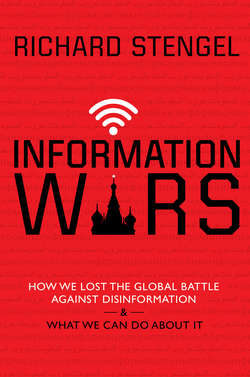Читать книгу Information Wars - Richard Stengel - Страница 26
На сайте Литреса книга снята с продажи.
Silos, Silos, Everywhere
ОглавлениеA couple of weeks after my confirmation, I got my State Department email address—with the domain state.gov—but there was very little in my inbox every morning. I was still getting more State Department email at my Gmail address than at my government one. I noticed that while my inbox sat empty, my staff received all kinds of internally produced news summaries and lists of clips and press releases. It was strange that there was no process to get you set up digitally—no set of lists or schedules. In fact, it took months to get on the lists I needed to be on to get news articles about the State Department, to get opeds and editorials about foreign policy, to get the rundown of weekly meetings—and even then, I’m sure I wasn’t on nearly all the lists I needed to be on. Occasionally, a longtime State Department hand would say, Hey, what’s that list? I didn’t even know about that one.
The truth was, few people at State knew what was going on in a 360-degree way. I was stunned, for example, to find that people at the State Department didn’t seem to know when the Secretary of State was giving a speech. Or what it was about. Or where it was taking place. In those first few months, when I’d mention to other Under Secretaries that the Secretary was giving a speech on, say, arms control or countering violent extremism, they would say, Really! How did you know about that?
This siloification extended far beyond the Secretary’s speeches. When the European bureau made a statement about some action of Putin’s or the Africa bureau condemned an action by a terrorist group in Mali, almost no one knew about it. There was no cross-promotion. Statements were issued from their silos and then not amplified. Public Affairs was often quite reticent about chiming in on such statements. They didn’t see their role as amplifying other statements—after all, they had their own statements to make! They thought it was the Secretary’s job to make speeches and the press’s job to report on them, and that’s how our policies got out to the public. Very 20th century. We literally didn’t have a single person assigned to tweet or be on social media while the Secretary was speaking.
One of the first ideas I had was to form a digital hub in PD that would not originate content but rather share, amplify, and coordinate it. Nobody seemed to be doing this. It would take only a handful of people—three or four—who could retweet and repost what the department had done that day. It would essentially be an aggregator of content for the department. But it could also refute false information about U.S. foreign policy. It would be a hub, and that’s what I called it. I thought it was a no-brainer. But the no-brainer was me, it turned out. Everyone objected. Public Affairs didn’t like the idea and said it was their function. International Information Programs thought this was their function. The seventh floor was skeptical and didn’t really understand the purpose.
I talked about it all the time. I wrote an action memo to the Secretary. And nothing happened. S did not sign the action memo. I didn’t get the go-ahead from management to hire people. I was frustrated and didn’t understand what was happening. It was my first experience with how ideas get blocked within the department. Ideas died at State because people saw them as violating their turf, not because they weren’t good. They died not because anyone overtly objected—they died from a kind of aggressive passivity. It took me a while to understand Colin Powell’s dictum that in government no idea on its own is good enough to rise; every idea needs a coalition to succeed.
